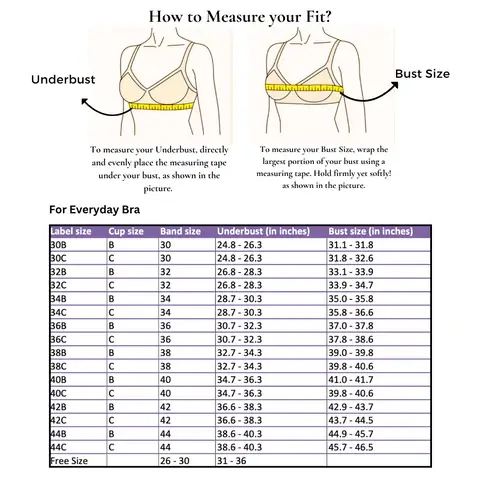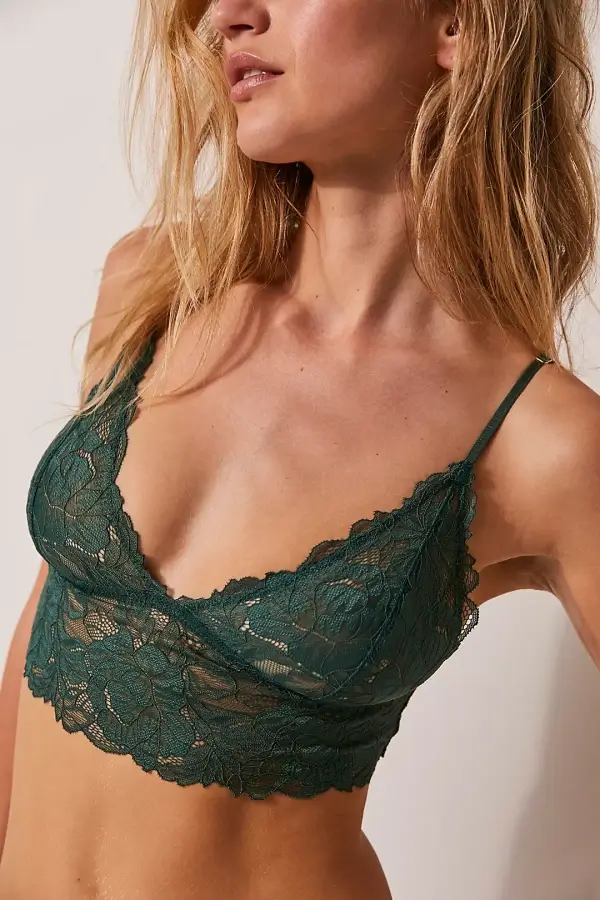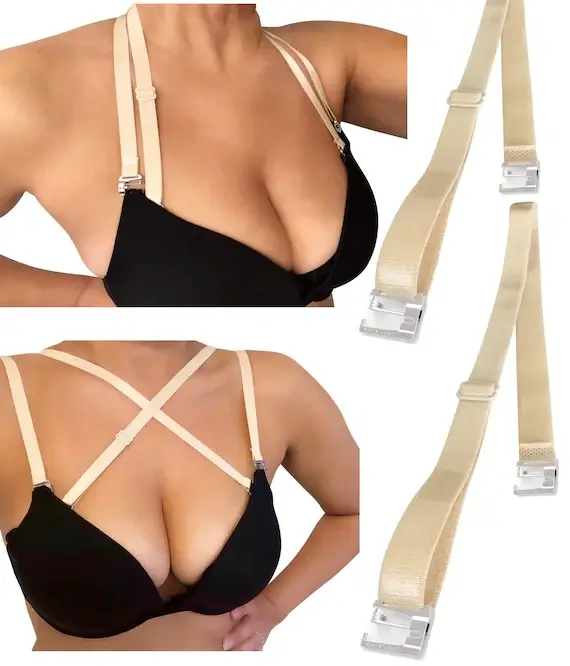How Are Bralettes Evolving From Simple To Supportive Designs?
Women want comfort but still need support from their bras. Many find themselves stuck choosing between painful underwires or flimsy alternatives that don't hold anything up.
Modern bralettes now combine comfort with real support through smart design elements rather than rigid wires. Today's best designs use strategic seaming, graduated support systems, engineered straps, and technical fabrics to provide lift and shape while maintaining the wire-free comfort bralettes are loved for.
I've been working in the lingerie manufacturing industry for over a decade, and I've seen firsthand how bralettes have transformed from simple fashion pieces to engineering marvels. Let me share what makes today's bralettes work for more body types than ever before.
What Construction Techniques Create Support Without Underwires?
Traditional bralettes often failed to provide real support. Many women felt they could only wear them for lounging at home or if they had smaller busts.
Modern supportive bralettes use strategic seaming to create three-dimensional shaping. Instead of relying on wires, they use carefully placed seams, darts, and panels to create lift from below and containment from the sides, mimicking the support of underwire bras without the discomfort.
When I first started designing bralettes, I focused too much on making them pretty and not enough on making them functional. I quickly learned that construction is everything when it comes to support.
Here are the key construction techniques we now use in our factory:
| Technique | How It Works | Support Level |
|---|---|---|
| Power Bars | Side panels that push breast tissue forward | Medium to High |
| Underbust Channeling | Reinforced band that mimics underwire support | High |
| Vertical Seaming | Creates upward lift and forward projection | Medium |
| Inner Slings | Hidden support layers that add structure | Medium to High |
| Contour Cups | Molded cups that provide shape without padding | Medium |
The most successful designs we create use multiple techniques together. For example, our bestselling "Natural Lift" bralette combines power bars with vertical seaming and underbust channeling. This creates a supportive "hammock" effect that lifts from below while securing from the sides.
Some of our designs also use internal slings—hidden layers of firmer fabric that provide additional support without showing on the outside of the garment. These internal elements work like invisible hands lifting from underneath.
Another innovation we've found effective is multi-layer construction. Instead of just using a single layer of fabric, we strategically place firmer materials in high-stress areas while keeping softer, stretchier fabrics in comfort zones.
How Do Bralette Architectures Differ For Various Cup Sizes?
Women with different bust sizes often have completely different support needs. A design that works for an A cup typically fails completely for a D cup or larger.
Effective bralette design requires different architectural approaches based on cup size. Smaller busts (A-B) need minimal structure with shaping elements, medium busts (C-D) require strategic reinforcement and lift, while fuller busts (DD+) need robust support systems with multiple reinforcement zones.

At our factory, we never use a one-size-fits-all approach. We've learned that scaling up a design that works for smaller cups simply doesn't work for larger sizes.
| Cup Size Range | Key Design Features | Material Requirements |
|---|---|---|
| A-B Cups |
• Minimal seaming • Light shaping elements • Focus on enhancing natural shape |
• Soft, flexible fabrics • Lightweight elastics • Minimal layering |
| C-D Cups |
• Strategic reinforcement • Defined cup structures • Power bars for centering |
• Medium-weight fabrics • Stronger elastic trims • Targeted reinforcement panels |
| DD+ Cups |
• Multiple support layers • Full side wings • Wider underbust bands |
• High-compression fabrics • Industrial-grade elastics • Multiple reinforcement zones |
For smaller cup sizes (A-B), we focus on creating gentle shaping without flattening. These customers often want to enhance their natural curves rather than seek major support. We use lighter fabrics with subtle contouring through simple seaming or gentle darting.
For mid-range cup sizes (C-D), we add more structure through strategic seaming and firmer materials. These designs need to provide both lift and containment, so we incorporate side slings and more defined cup structures while maintaining comfort.
For larger cup sizes (DD+), we completely rethink the architecture. We use multiple layers of support, including power bars that extend all the way to the back band, wider underbust channels, fuller coverage, and stronger straps that distribute weight more effectively.
I remember working with a client who wanted to offer the same cute triangle bralette design in sizes XS-3XL. We had to explain that this approach would lead to unhappy customers with larger busts. Instead, we developed three different internal constructions while keeping the external appearance similar—a much more successful approach.
How Does Longline Construction Enhance Bralette Support?
Traditional short-band bralettes often ride up or fail to provide enough support, especially for fuller busts. Many women love the look of bralettes but find them impractical for all-day wear.
Longline construction extends the supportive band below the bust, creating a more stable foundation that distributes weight across a larger area. This approach provides significantly more support by anchoring the garment against the ribcage rather than relying solely on the underbust band.

The longline style has been one of our biggest growth categories in recent years. It's not just a fashion choice—it's genuinely more functional for many body types.
| Longline Feature | Support Benefit | Design Consideration |
|---|---|---|
| Extended Band Length | Distributes pressure across larger area | Must be shaped to follow torso contours |
| Boning Elements | Prevents band from rolling up | Needs to be flexible enough for comfort |
| Graduated Compression | Creates upward tension for lift | Requires careful fabric selection |
| Side Wing Extension | Smooths side tissue for cleaner profile | Must allow enough stretch for breathing |
The most effective longline designs we produce extend 2-4 inches below the underbust. This creates enough surface area to properly anchor the garment against the body. When designed correctly, this prevents the common problem of the band flipping up during wear.
To prevent rolling and ensure the longline band stays in place, we often incorporate light boning elements or reinforced channels. These provide structure without discomfort. We carefully place these elements at the side seams and sometimes at the center front, avoiding areas where they might dig in when sitting.
Another key factor is the shape of the longline portion. A straight band will almost always roll up. Instead, we contour the band to follow the natural curve of the ribcage, narrowing slightly at the bottom edge. This creates a more secure fit that stays in place throughout the day.
For fuller cup sizes, we sometimes create a "graduated compression" effect where the tension in the fabric increases as it extends downward. This creates gentle upward pressure that helps lift the bust naturally without relying on straps.
One challenge with longline designs is balance. If the lower band is too rigid, it can be uncomfortable when sitting. Too stretchy, and it loses its supportive quality. We've found that using firmer power mesh or stretch satin in key support areas while allowing more give in others creates the best balance.
How Do Strap Designs Balance Support And Style?
Many bralettes have thin, decorative straps that dig into shoulders or fail to provide proper support. Traditional functional straps, meanwhile, often look clunky or utilitarian.
Modern supportive bralettes use engineered strap designs that combine aesthetic appeal with functional support. Key innovations include graduated width straps, multi-strand distributions, convertible configurations, and strategic placement that balances weight distribution with visual appeal.

Straps are often overlooked, but they're crucial to a bralette's success. In our design process, we treat straps as both functional elements and design features.
| Strap Innovation | Support Function | Style Benefit |
|---|---|---|
| Graduated Width | Wider at shoulder, narrower at attachment | Creates visual interest while preventing dig-in |
| Multi-Strand | Distributes weight across multiple points | Creates decorative back details |
| Convertible | Adjusts to provide support in different positions | Versatility for different outfits |
| Front-Focus | Pulls weight toward center to prevent slipping | Creates flattering neckline shapes |
For fuller busts, we've found that graduated width straps work especially well. These start wider at the shoulder (where padding is needed) and taper to a narrower width where they connect to the bralette. This provides comfort without looking bulky.
Multi-strand designs distribute pressure across a larger area while creating beautiful back details. Instead of a single strap bearing all the weight, we use 2-3 thinner straps that join together toward the back band. This approach combines function with fashion.
Strap placement also makes a huge difference. Traditional bra straps are often set too far apart, causing them to slip off shoulders. In our designs, we bring the straps in slightly, especially at the back, to work with the body's natural contours. This simple adjustment dramatically improves both comfort and function.
Convertible strap systems have been extremely popular with our clients. These allow the wearer to change configurations based on their outfit or support needs. Our most successful design includes removable J-hooks that convert standard straps to racerback, providing extra lift when needed.
What Fabrics Provide Both Comfort And Support In Modern Bralettes?
Traditional bralettes often used thin cotton or lace that couldn't provide adequate support. These soft fabrics felt nice but stretched out quickly and lacked the strength needed for larger cup sizes.
Today's supportive bralettes use high-performance technical fabrics that combine comfort with functional properties. Key innovations include four-way stretch microfibers, power mesh panels, engineered knits with zoned compression, and moisture-wicking materials that maintain support throughout wear.
Fabric selection is just as important as construction in creating supportive bralettes. Our material choices have evolved dramatically over the years as textile technology has improved.
| Fabric Type | Support Properties | Comfort Features |
|---|---|---|
| Power Mesh | Strong hold with minimal thickness | Breathable, lightweight |
| Microfiber Blend | Maintains shape after repeated wear | Ultra-soft against skin |
| Performance Knits | Targeted compression zones | Moisture-wicking, quick-dry |
| Spacer Fabric | Three-dimensional structure for shaping | Breathable, no show-through |
We've found that strategic layering of different fabrics creates the best results. For example, in our most supportive designs, we use power mesh as an inner layer for structure, microfiber for the cup lining for softness against the skin, and a decorative outer fabric for aesthetic appeal.
For the band area, we often use fabrics with differential stretch – more stretch horizontally to allow for breathing and movement, but limited vertical stretch to prevent the band from riding up. This seemingly simple engineering makes a huge difference in all-day comfort.
A game-changing innovation has been the development of knitted fabrics with zoned compression. These fabrics can be engineered to provide firm support in some areas while offering more give in others – all within a single piece of material. This allows us to create more seamless designs that still provide excellent support.
For moisture management, we incorporate performance fabrics similar to those used in athletic wear. These help prevent the discomfort of dampness during hot weather or physical activity – a common complaint with traditional bralettes made from cotton or synthetic lace.
Our customers particularly love spacer fabrics for molded cup designs. Unlike traditional foam, spacer fabric has a three-dimensional structure that provides shape while remaining breathable. It gives a smooth look under clothing while still allowing air circulation.
How Are Closures Evolving To Enhance Bralette Support?
Traditional pull-on bralettes often lacked adjustability, while early back-closure designs frequently used lightweight hardware that failed over time. This meant many bralettes couldn't provide consistent support.
Modern supportive bralettes incorporate robust, adjustable closure systems more similar to structured bras. Key innovations include wide multi-hook back closures, front-closure systems with reinforced stabilizers, and adjustable band designs that offer customizable fit without sacrificing comfort.
Closures may seem like a small detail, but they make a huge difference in how supportive a bralette feels. We've put considerable research into finding the right balance of security and comfort.
| Closure Type | Support Benefit | Best For |
|---|---|---|
| Wide Back Hook-and-Eye | Distributes tension across wider area | Medium to full busts |
| Front Closure | Creates center-pull tension for lift | Those wanting front lift |
| Adjustable Band Design | Allows for body fluctuations | All body types |
| J-Hook Converter | Creates extra lift when needed | Active lifestyles |
For fuller busts, we've found that wider back closures with 3-4 hooks provide much better support than the single-hook closures often found on traditional bralettes. The wider closure distributes tension across a larger area, preventing the band from digging in and creating a more secure foundation.
Front-closure designs have become increasingly popular, especially for women who struggle with reaching behind their back. We've developed reinforced front closures that not only stay secure but also create a center-pull effect that enhances lift and separation.
A major innovation has been the development of partially-adjustable band systems. These combine the comfort of a pull-on design with the precision fit of an adjustable closure. For example, our "Flex-Fit" design uses a traditional hook-and-eye closure on one side while the other side has a stretchy panel. This provides security with enough give for comfort throughout the day.
For customers who need extra support during physical activity, we've incorporated J-hook converters that temporarily transform standard straps into a racerback configuration. This simple addition dramatically increases support when needed without requiring a complete wardrobe change.
We've also found that closure placement matters significantly. By moving the back closure slightly higher than traditional bra placement, we create an anchor point that better counters the downward pull of breast weight, particularly helpful for fuller busts.
Conclusion
Today's bralettes have evolved far beyond their simple beginnings. Through careful engineering in construction, sizing architecture, band design, strap configuration, fabric selection, and closure systems, modern bralettes now offer real support without sacrificing comfort.
Get a Free Quote for Your Underwear Projects
